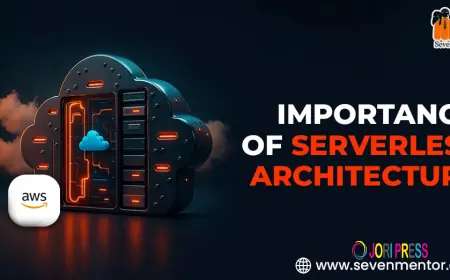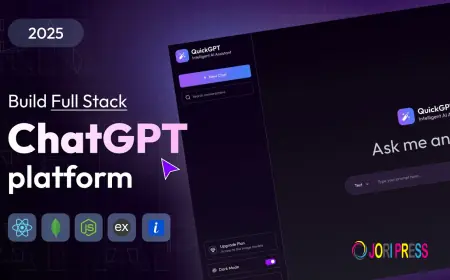How AI Learning Apps Are Revolutionizing Early Childhood Education in 2025

In today’s rapidly evolving world, the fusion of artificial intelligence (AI) and education is transforming how children learn from the very beginning. Early childhood education—once confined to colorful books, classroom toys, and basic interaction—is now increasingly supported by powerful AI learning apps that can adapt, assess, and personalize experiences for each young learner. In 2025, these AI-powered tools are not just a luxury; they are fast becoming an essential part of how toddlers and preschoolers engage with foundational learning.
This transformation isn’t just about digitization; it’s about rethinking education altogether. Let’s explore how AI learning apps are revolutionizing early childhood education, the benefits they bring, their practical applications, and what the future holds.
The Rise of AI in Early Childhood Education
AI in education is not new, but its use for children aged 2–7 has expanded dramatically in recent years. The global pandemic gave a significant push to educational technology, and developers began focusing more on creating tools suitable for the youngest learners. In 2025, AI learning apps for kids are smarter, safer, and more engaging than ever before.
These apps utilize machine learning, natural language processing, speech recognition, and computer vision to create highly responsive educational environments. Unlike traditional digital games, AI learning apps can:
-
Adapt to each child’s pace and style of learning
-
Provide real-time feedback and encouragement
-
Adjust content difficulty based on performance
-
Understand voice commands and interpret emotional cues
Key Features That Make AI Learning Apps Effective for Kids
1. Personalized Learning Paths
Children learn at different speeds and in unique ways. AI apps can observe how a child responds to various types of tasks and then personalize content accordingly. For example, a child struggling with number recognition might receive more interactive number games, while another who excels might move on to early addition.
2. Voice Interaction and Conversational AI
Many apps now include conversational AI, which allows children to talk to a virtual tutor. This makes the learning experience feel more human and natural, helping kids improve language skills and social interaction. Think of it as a digital teacher that listens, responds, and teaches in real time.
3. Emotion Recognition
Advanced apps in 2025 can read a child’s facial expressions through the device camera to detect boredom, frustration, or excitement. This feedback loop allows the app to adjust its pace or switch to more engaging activities, ensuring that children stay motivated and attentive.
4. Gamification and Rewards
AI apps integrate gamified experiences—badges, points, virtual pets, and more—to keep learning fun and goal-oriented. Children feel a sense of achievement that keeps them coming back, even when the tasks are educational.
5. Parental Dashboards and Analytics
Parents can view detailed insights about their child's progress, strengths, and areas needing improvement. These dashboards offer AI-generated tips on how to support learning at home and can suggest offline activities tailored to a child’s needs.
Real-World Use Cases of AI Learning Apps for Kids
Language Learning
Apps like Lingokids and Speakaboos use AI to teach new words, correct pronunciation, and create storytelling adventures. They can adapt vocabulary based on the child’s age and progress.
Mathematics
AI math apps like Montessori-based tools or interactive number games personalize learning paths using real-time performance. These apps break down abstract math concepts into visual and audio formats for better understanding.
Reading and Literacy
AI-powered reading apps can now listen to a child read aloud, correct pronunciation, and suggest improvements. They also highlight areas that need more attention and provide age-appropriate reading challenges.
Creative Learning
Apps that teach drawing, music, or storytelling use AI to provide creative feedback. For instance, a music app might teach rhythm by clapping patterns with the child or help them compose short tunes with smart suggestions.
Benefits of AI Learning Apps in Early Education
1. Accessibility for All
AI apps make quality education more accessible. Children in remote or underserved areas can now access world-class learning tools with just a tablet or smartphone and an internet connection.
2. Learning Beyond the Classroom
AI learning doesn’t stop when school ends. These apps allow continuous learning at home, in the car, or even during travel, ensuring that a child's curiosity is always fueled.
3. Enhanced Focus on Emotional Development
Some AI apps go beyond academics and help with emotional intelligence and behavior management. Apps with emotion-recognition features guide kids through calming exercises or positive reinforcement techniques.
4. Early Detection of Learning Disorders
With the ability to track and analyze user behavior over time, AI learning apps can detect signs of learning disabilities like dyslexia or ADHD. Early intervention makes a huge difference, and AI helps parents and educators act faster.
Concerns and Challenges
While the benefits are undeniable, several concerns must be addressed:
1. Data Privacy
Children’s data is sensitive. AI apps must comply with regulations like COPPA (Children's Online Privacy Protection Act) and ensure data encryption and parental consent protocols.
2. Screen Time Management
AI apps should complement—not replace—physical play, human interaction, and outdoor activities. The best apps include timers or encourage breaks to promote healthy usage habits.
3. Need for Quality Control
Not all AI learning apps are created equal. There is a growing demand for vetted, research-backed tools developed in collaboration with child psychologists and educators.
Role of AI App Developers in Shaping Early Education
Behind every great AI learning app is an innovative development team. In 2025, the success of such apps largely depends on close collaboration between AI engineers, UX/UI designers, child development experts, and educators.
An AI app development company that focuses on ethical AI, usability, and educational outcomes plays a pivotal role in shaping the future of early learning. These companies ensure the balance between smart algorithms and child-friendly experiences while maintaining transparency, inclusivity, and safety.
The Future of AI Learning for Kids
As we look ahead, here are some trends and innovations shaping the future of AI in early education:
1. Mixed Reality and AI
Soon, AI learning apps will integrate with AR/VR to create immersive experiences. Imagine children learning geography by walking through virtual landscapes or understanding biology by interacting with 3D organisms.
2. Multilingual Support
Future apps will support real-time language switching, helping children grow up multilingual in an increasingly global world.
3. Emotionally Intelligent AI Tutors
AI tutors that can comfort a frustrated learner or encourage a shy child to participate more actively will redefine how young minds build confidence and resilience.
4. AI-Powered Peer Learning
Some upcoming apps may allow children to interact with other learners in real-time, forming virtual classrooms or playgroups where the AI facilitates collaboration.
Final Thoughts
AI learning apps are no longer just digital toys—they are powerful educational tools redefining how young children engage with knowledge. In 2025, their role in early childhood education is deeper than ever before, offering personalized learning, emotional guidance, and global access to quality content.
However, the journey doesn’t end here. As technology advances, so too must our approach to ethical AI use, inclusivity, and child-centered design. Parents, educators, and developers must work together to ensure that these tools serve as bridges—not barriers—to a child’s overall development.
By investing in the right AI tools, guided by innovation and empathy, we can lay the foundation for a smarter, kinder, and more curious generation.
FAQs
1. Are AI learning apps safe for kids?
Yes, most trusted apps comply with safety and privacy regulations. However, it’s important for parents to choose apps with strong privacy policies and active parental controls.
2. How much screen time is recommended for children using AI apps?
The American Academy of Pediatrics suggests no more than one hour per day for children aged 2–5, and AI apps often include timers to help manage usage.
3. Can AI apps replace teachers or parents?
No, AI apps are supportive tools, not replacements. They work best alongside human interaction, play, and real-world exploration.
4. What devices are best for AI learning apps?
Tablets with front-facing cameras and microphones are ideal, as many apps use voice recognition and emotion detection features.
5. How do I choose the right AI learning app?
Look for apps developed in partnership with educators, with strong reviews, and a focus on personalized learning, safety, and emotional development.
What's Your Reaction?
 Like
0
Like
0
 Dislike
0
Dislike
0
 Love
0
Love
0
 Funny
0
Funny
0
 Angry
0
Angry
0
 Sad
0
Sad
0
 Wow
0
Wow
0



















































